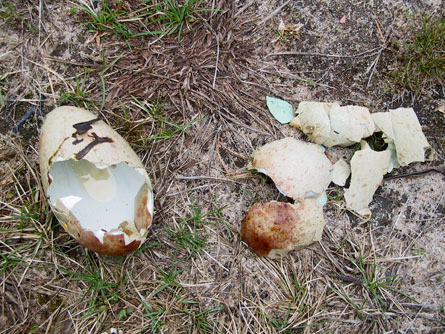Crane
Population Growth: Why So Slow?
Tom Stehn's Answer
If only one chick usually survives, why do Whooping cranes lay that second egg? What reasons can you think of why a second egg might sometimes be important?

Photo Richard Urbanek, ICF
The second egg is like an insurance policy:
- If for some reason the first egg doesn't hatch, or one chick gets sick and dies or is taken by a predator, perhaps the second chick will be able to survive.
- When food and weather conditions are ideal, both chicks sometimes survive. (This happens about 8% of the time.)
There is a
cost to laying two eggs! The
female has to use up energy to produce that second egg, and she may
spend additional
time trying to hatch it. Having two chicks hatch could result
in parents splitting the available food between both chicks so that
neither one
of the chicks gets enough food to survive.
 |
The
Lobstick Family Brian Johns, CWS |
It would not be good if neither chick gotenough food to survive. But nature has evolved a way to prevent that from happening: the eggs hatch two days apart, and the first chick to hatch is usually stronger and will actually peck vigorously at his younger sibling. Biologists have recorded dozens of pecks per minute against the younger chick as it gets pummeled by its sibling. The stronger chick begs vigorously for food when the parents have a tasty morsel in their beaks, so the older chick ends up getting more to eat. Only when food is very abundant and the stronger chick is fully stuffed and can't eat any more will that second chick get its share of the food. The second egg is nature's way of taking advantage of those excellent years when food is abundant for all.


